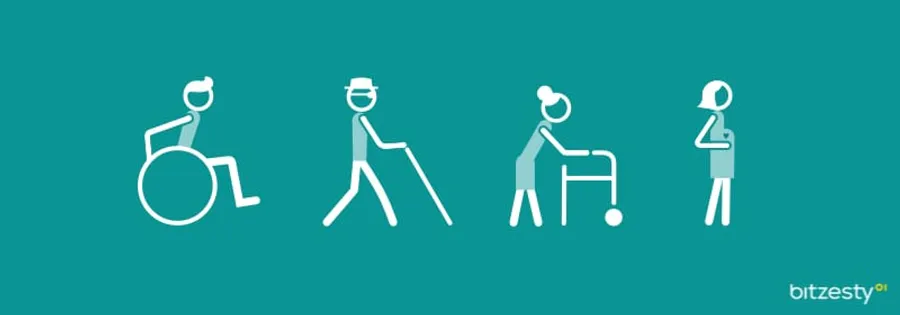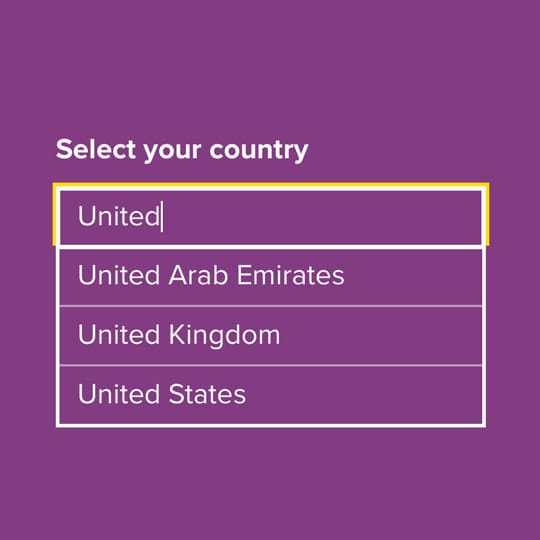· · Laura Paplauskaite · 7 min read
2020 digital trends: predictions from our experts

As we enter a new decade, our in-house agency experts look ahead to anticipate how the technology trends, shifts in user experience and design, and ways of working will define how digital services will develop and how organisations will change in the coming years.
Laura Paplauskaite – Managing Director and Head of Service Design
Inclusive design is mandatory

The rise of inclusive design is putting usability at the heart of new laws and legal precedents – and the most successful digital products and services.
Making your services accessible means catering for disabled users’ needs – whether that’s making forms easy to navigate via screen readers or providing ‘alt’ text for images. Inclusive design also means considering discrimination according to race, age or gender – as well as our everyday challenges.
Every single one of us experiences temporary impairments more often than we realise. For example, we experience physical impairments when we have a minor injury; cognitive ones when we are sleep-deprived, ill, under lots of stress or simply tired, or even when we are just not able to concentrate when in a noisy place.
A vast majority of people experience technology via mobile devices on the go. Our environmental and life circumstances have a significant impact on how we use websites and other digital products. Understanding and empathy towards all our users throughout the design and build process will enable us to create successful digital services – for everyone.
Voice will impact design

We’ve been keeping an eye on voice interaction trends for a while. While voice usage has been steadily increasing since 2008, it’s adoption has been held back due to sub-par user experience. However, 2020 is set to see a massive shift with between 30-50% of all online searches predicted to be voice searches (Gartner and ComScore, respectively).
As Amazon Alexa, Google Assistant and Apple Siri are competing for market share, the voice recognition capabilities are constantly improving. Furthermore, these organisations recognise the role good UX plays in adoption of voice technology and are investing heavily in creating design patterns and design guide books, which will in turn help improve user experience and therefore usage.
Not to miss out, organisations need to consider how voice will change how users engage with them, while designers need to make sure that they take voice into account from the beginning of the project – starting with user research.
Once the need for voice is established, crafting consistency between visual and voice interactions will be a core challenge for UX design. Also, as voice user experiences can be delivered without visual cues, we need to have a stronger focus on language than ever.
By keeping a laser-sharp focus on user needs will help designers navigate these new challenges. And voice interaction will form a more prominent part of user research considerations throughout the project – there is no better way to ensure your product’s voice interactions are effective than by observing users in action.
Digital service design as a methodology

Service design isn’t anything new. However, as digital design discipline is maturing, there is increasing recognition of its ability to inspire and inform real change.
Gone are the days when digital design was focused on the colour choices or best UX patterns – of course, these are just as important as ever, but they are just hygiene factors. Equally, it’s no longer enough to understand what the users need from the specific digital tool either. To be successful, digital products need to be considered in relation to wider proposition – and this is where service design comes in.
Increasingly, as organisations are maturing in their digital practices, they recognise that digital tools don’t exist in isolation. Furthermore, service design methodology, with its roots in Design Thinking, is a powerful tool for continuous improvement and innovation, as demonstrated by our award-winning SXT project.
With Design Thinking and Service Design now being taught in top business schools as part of MBA, Digital Transformation and Innovation programmes, the new generation of business leaders appreciate the role Service Design plays in an organisation’s success, spurring the demand.
Smitha Chakravarthula – Head of Delivery
Agile practices will adapt to remote, global workforces

When Agile first started being adopted, teams were typically located in close proximity with emphasis on face-to-face conversations. All the ceremonies were geared towards being in the same room (post-it notes on a wall, stand-ups), and didn’t cater for remote working.
However, the core philosophy behind Agile actually empowers remote teams.
Remote working as a core company culture is growing. It’s predicted there could be 1bn remote workers globally by 2035 (The Economist).
Our increasingly connected world, fuelled by technological advances, means remote working is not only doable – it’s beneficial for employees and employers. Remote working allows businesses to access a talent pool who would have otherwise been out of reach, so you benefit from varied perspectives, skills and experiences and, not least, do your bit to preserve the environment, too.
With an increase in remote-working globally, Agile practices are adapting. Tools like video conferencing, instant messaging, project and task management software, facilitate Agile’s practices, such as stand-ups and sprint meetings, across distributed teams. However, remote does not mean less interaction but more – so it’s important to make sure that your team members are proactive communicators, and if you are distributed around the world, there is enough overlap.
Agile and remote-working can go hand-in-hand, but you’ll need to find the best way to make it work for your organisation.
Matthew Ford – Technical Director/CTO
Artificial intelligence and data analytics bring new opportunities

Artificial intelligence brings vast new opportunities and capabilities. From natural language processing to automation, AI will definitely continue to be a dominant trend and transformative force in 2020.
With access to new datasets, you can drive meaningful personalisation in digital products and services, completely transform user experiences and interactions, and elevate the importance of human-only skills to new heights. As AI is no longer a buzzword, it will start to be utilised where it can bring real value rather than being something done for the sake of it.
On the other hand, there is still plenty that can be done in the realm of traditional data analytics. With the tools being easier to adopt and roll-out, we will see more reporting and analytics being done by operational teams to help provide a better service. One of our clients, the Trussell Trust, runs the largest network of food banks within the UK, and they use data to lobby the government to make policy changes. To allow full flexibility, we have helped them integrate Tableau with their back-office system so that their teams can create their own ad-hoc dashboards and reports without needing custom software development.
If you are looking to take advantage of traditional data analytics and have the data in-house, you’ll need to start training your employees to tap the right insights. If you are interested in capitalising on AI, begin by focusing on collecting data in the right way. For example, through strategic partnerships like the NHS and Amazon Alexa partnership or AI companies like Google’s Deepmind.
Data sovereignty, protection and sharing will change

With Brexit underway in the UK, 2020 is going to involve a lot of consideration about data sovereignty. Data sharing and cross-border data flows between the UK and EU will change.
While the UK’s own Data Protection Act ensures continued stringent personal data protection, once the UK leaves the EU, data won’t be able to flow so freely from the EU to the UK as it currently does under GDPR. A complex legal framework between the UK and EU is inevitable.
The transfer of data across the European Union is at the core of many organisations – from order tracking to cloud-based storage or email. A hard, deal or no-deal Brexit will determine the extent of the challenge and action.
Either way, just being GDPR compliant will no longer be enough. You need to assess where your data flows across borders, question your existing providers and plan for different eventualities – from standard contractual clauses (SCCs) to Binding Corporate Rules (BCR).
Legal implications and technical difficulties of data transfers throughout the Brexit process will need absolute focus next year to ensure business continuity.
Climate change will influence all your decisions

With governments and organisations declaring a climate emergency, people will start to look outside the obvious ways to help tackle climate change. As creators of digital services, there are things we can do to reduce our impact on the environment.
When creating services, more organisations are going with a digital-first approach, which will help cut down on paper use. To reduce carbon emissions, organisations can highlight choices to their users that are better for the environment, for example, Deliveroo promoting plant-based foods or Amazon displaying the carbon cost of their products to encourage more conscious consumption.
Technologies that are energy-inefficient – especially Bitcoin and blockchain – will need to address their carbon footprint if they are to gain widespread public adoption.
At Bit Zesty, we are a remote-first agency and have been for over ten years, but other organisations will be looking at how they can enable more remote working to help preserve the environment.
As the year progresses, expect an undercurrent of climate change concern to drive more organisational decisions – whether that’s driven by organisations themselves or their users. There’s no escaping that climate change affects everything we do – or at least, it should.
To sum up
While the future holds many uncertainties, it presents so much potential to change the ways we work, and use our work, to have a positive impact on the people and the world around us.
We have the opportunity to use our innate human ability to communicate and empathise to more fully understand each others’ needs, successfully work together across the globe and use technology to its greatest advantage to society and our environment.
Do you need help with your application?
At Bit Zesty, we specialise in building and maintaining bespoke software and integrating AI into existing applications.
Looking to build an application, but unsure of the price? Keen to discuss our experience, processes and availability?


